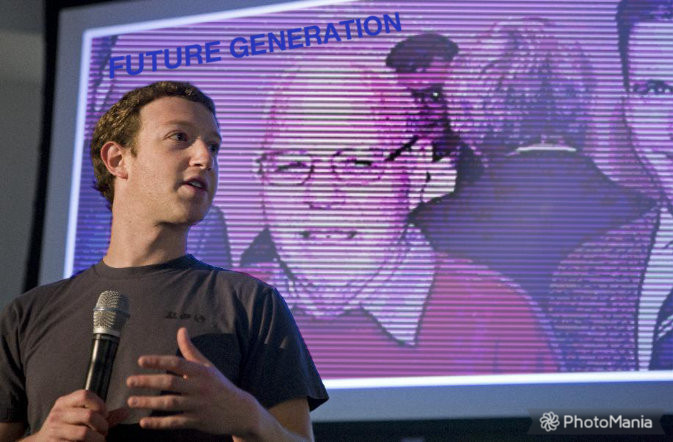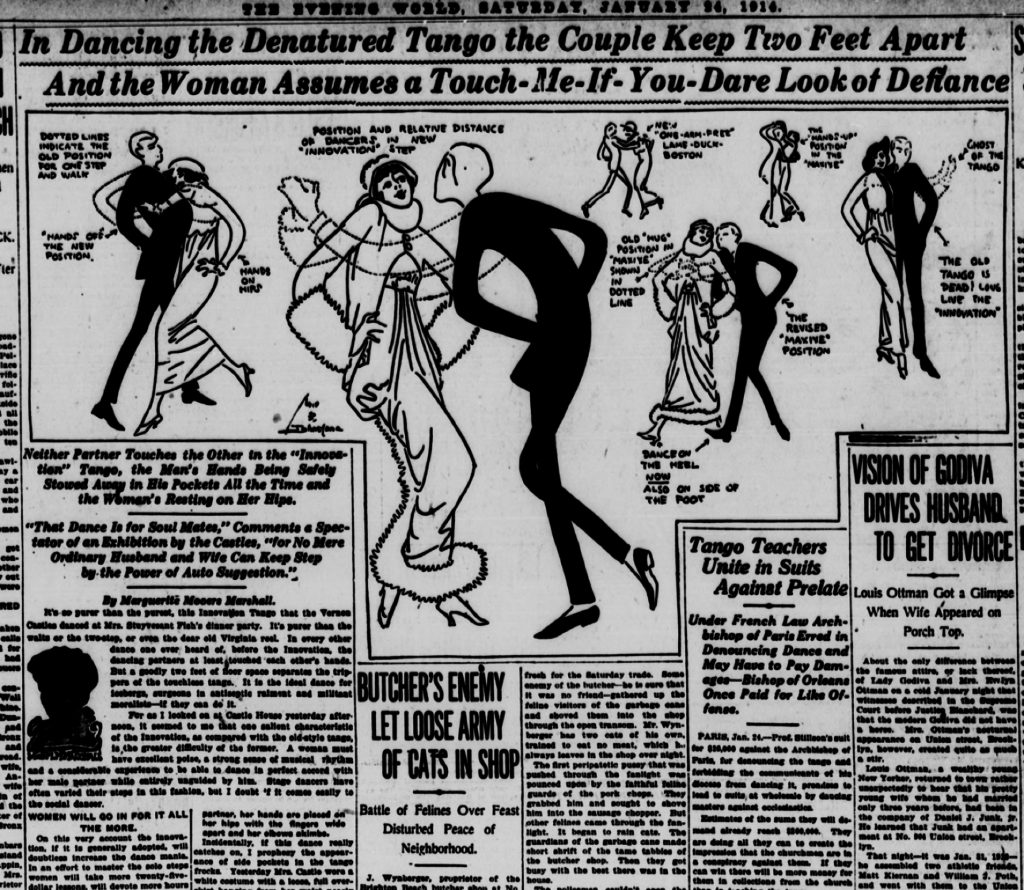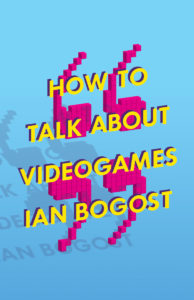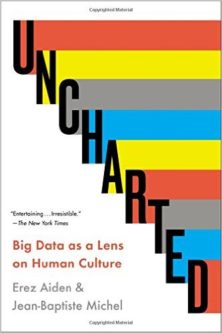Introduction: Postmortem
Between the years 2015-18—when the (so-called) “alt-right” first exploded to prominence in the public eye—media coverage and academic scrutiny of this loose knit far-right coalition approached the topic almost exclusively from the perspectives of ethnography, culture/discursive mapping and ideological historiography. And, indeed, circumstances demanded such approaches. Countless readers were taken off-guard by the sudden wave of antisemitic internet trolls and polo-clad neo-fascists whom they now saw marching in the streets. Only methods such as these were capable of operating with the necessary speed to orient the public to a grotesque new movement that appeared to enjoy the ear of the president himself.
But in that haste, something was neglected. To date, a rigorous, comprehensive materialist analysis of the alt-right and its origins has yet to be seen. Of course, the great challenge of historical materialism is that it demands detail—facts pertaining to the realities of finance, technological affordances, regulation of capital and labor under the law, stacks and flows of raw currency, and so on. And such detail cannot be developed without ample time for researchers to acquire and organize it, or for readers to absorb it. But time was in short supply as the alt-right made its transition from a mostly virtual media phenomenon to a political movement characterized by public demonstrations, entry into the halls of American power, and, very quickly, murder. And so, the “culturalist” approach rightly predominated.
It should go without saying that such an absence of materialist analysis has left us only partially equipped to recognize, let alone oppose, future movements owing their origins to conditions similar to those of the alt-right. Today, at least in the opinion of some commentators, the alt-right proper may be a spent force (Weill 2018; McCoy 2018; Barrouquere 2018). But its legacy lives on in even more extreme ideologies and movements. These new forces of the far-right are emerging according to patterns startlingly similar to those which birthed the alt-right. It is essential that we study them in light of the relations of capital to productive labor and technology.
Unfortunately, the convergence of crises that menace the present day, spanning from the rise of a new populist authoritarianism to climate catastrophe and beyond, are defined precisely by an urgency that would seem to preclude the production of rigorous dialectical works. This essay nevertheless advocates for such an impossible approach—indeed, insists upon the necessity of this tedious, time-consuming work. Toward that end, this essay will indicate some approaches that such a fact-driven, dialectical method might take. It will identify key economic antagonisms and moments of technological revolution, which set into place the conditions necessary for the emergence of a proto-alt-right media ecosystem, and eventually the alt-right itself. It will indicate how similar patterns of antagonism and technological change are contributing to the emergence of newer, yet-more radical and dangerous far right fringe movements today. And while these are, at best, trailheads to a more detailed and rigorous analysis, perhaps it will at least serve as postmortem for a moment that has since grown into a crisis. Perhaps in its very failure to fully answer its own mandate, this essay will succeed in stressing the urgency of such an undertaking.
Gaps and Surfeits: Reviewing the Culturalist Literature
To be sure, many fine works of political economy addressing this era of far-right ascendancy are being written. But while indispensable, these do not address the alt-right per se. The journal Critical Sociology recently published its symposium “Neoliberalism and the Far Right,” a concise set of articles describing the “organic or constitutive pathologies or contradictions within the political economy of neoliberalism that, in many respects, dates back to the emergence of this distinct ideo-political framework in the 1930s,” and (so the symposium’s participants argue) produced the conditions that have led us to our current moment of authoritarian populism (Kiely and Saull 2018, 821). The Monthly Review continues to publish exemplary works of materialist political economy, such as Michael Joseph Roberto’s 2017 piece, The Origins of American Fascism. In it, he seeks to recruit the works of key theorists of 20th Century fascism (Baran, Sweezy, Haider, Corey, Magil and Stevens) for the needs of today (Roberto 2017). As in the Critical Sociology symposium, this work insists upon a recognition of historical continuity. In steep contrast to the exceptional or atavistic treatment that characterizes so much popular coverage and analysis of President Trump (Robin 2017), Roberto’s insistence upon a sense of historical continuity will be essential to a project of materialist analysis of the alt-right.
Unfortunately, these works, and others like them, leave the alt-right itself untouched, or at best tangential, to the broader issues of far-right populism, the radicalization of the American white middle class, the legacy of neoliberalism and of its “cleansing [of] state from the consequences of (social) democracy” (Kiely and Saull 2017, 822). Perhaps this is appropriate. For while the alt-right may have seized an outsized share of public attention, it is debatable just how great an influence the movement can realistically claim (Mudde 2018). Indeed, the works of Roberto, Foster, and the Critical Sociology symposiasts indicate that we must not treat the alt-right as a primary stimulus of our country’s current predicament. However, neither is the alt-right reducible to a generic symptom of these same historical forces. While unimaginable outside of the broader historical political-economic context sketched above, the alt-right is a consequence of a subset of productive forces specific to itself. A historical materialist analysis of the alt-right must seek to identify the productive patterns that were unique to the genesis and metastasis of the movement—hence the importance of an initial focus on media and communication technology.
Major works specifically addressing the alt-right have been largely free of political economic approaches. The most prominent long-form texts on the topic make no claims‚ implicit or otherwise, to performing a materialist analysis of the subject. George Hawley’s Making Sense of the alt-right is a rigorous (if brief) scholarly treatment of the movement, which profiles prominent movement personalities, pivotal moments in the movement’s evolution and metastasis, and highlights the ideological positions that defined the movement over the past decade and a half (Hawley 2018). While Hawley does hazard to identify some causal patterns pertaining to relations between capital and the productive forces that gave birth to the movement, he stops far short of a structural analysis. Mike Wendling’s alt-right from 4chan to the White House is a detailed taxonomy of the cultural and ideological categories that comprise the alt-right. It offers a clear and well-delineated lexicon with which to discuss to alt-right, but it offers effectively no causal analysis for the origins and orientations of the alt-right (Wendling 2018). David Neiwert’s Alt-America: The Rise of the Radical Right in the Age of Trump does attempt to trace origins and contingencies, narrativizing the movement through the political evolution of American conspiracy cultures (Neiwert 2017). Neiwert makes a convincing case for the presence of conspiratorial thinking across American far-right subcultures. And his claim that the alt-right represents an outgrowth of militia and anti-New World Order subcultures is intriguing enough to warrant serious pursuit. Nevertheless, Niewert’s analysis is also primarily cultural, and leaves material explanations largely unmodeled.
The sole full-length work to focus on the alt-right while claiming to speak from the socialist position is Angela Nagle’s monograph Kill All Normies. The alt-right, Nagle argues, emerged as a force of opposition to what the right characterizes as unchecked “PC-cultural politics” (Nagle 2017, 19) of the online left, a movement which had become preoccupied with toxic identity politics and ideological purges. In what has become one of the book’s most hotly debated passages, Nagle writes that “the key driving force behind [online call-out culture] is about creating scarcity in an environment in which virtue is the currency… the counterforce of which was the anonymous underworld from which the right-wing trolling cultures emerged” (Nagle 2017, 76). That is to say that an exclusionary left-wing culture created the opening for a strategic right-wing backlash. This contention has, in the years following its publication, further exacerbated divisions within the left (Liu 2017, Stewart 2017) while simultaneously provoking attempts to seal these fissures (Weatherby 2017).
Whether it is or is not accurate, and for all the self-reflection it may have provoked on the left, Nagle’s critique should not be mistaken for a materialist analysis of the alt-right’s origins and modes of self-reproduction. Rather, it would more accurately be described as a cultural ethnography presented via market metaphor. Nagle’s “online economy of virtue” (Nagle 2017, 68) belongs to the realm of political economy only insofar as it is libidinal and “there is as much libidinal intensity in capitalist exchange as in the alleged ‘symbolic’ exchange” (Lyotard 1993, 109). But while such a transposition is no doubt possible, this cannot credibly be claimed as Nagle’s project.
Nagle’s critique takes place at the level of culture, engaging with culture as experienced and described by those within it. And while this approach contains some shortcomings, so too do all methodologies and critical frameworks. The culturalist approach no doubt offers advantages that other analytic lenses do not. Culturalist approaches like Nagle’s can reveal intra-movement fault lines while charting the expressions of (for example) commodity fetishism in online subculture. This can help us to understand how consumer identity merged with reactionary politics in the Gamergate movement that began in 2014 (Massanari 2017, Salter 2018). It should also be noted that culturalist approaches offer lay readers a compelling entry point into otherwise alien objects of study. When faced with the sudden appearance of a strange and frightening movement like the alt-right, such reader appeal is vital.
Clearly, we do not lack for well-drawn histories and ethnographies of the alt-right. Nor do we lack for serious political economic treatments of the global authoritarian populist turn. What we lack is a substantive work that will specifically treat the alt-right as the outcome of relations of production at those sites from which the alt-right issued forth.
Trailheads: Sites of Interest for Material Analysis
The alt-right was initially a media-oriented phenomenon, existing almost exclusively in the communicative space of Web 2.0 and subsequent Social Web. Since “different ways of financing and organizing cultural production have traceable consequences for the range of discourse, representations, and communicative resources…and for the organization of audience access and use” (Golding and Murdock 2005, 70), a materialist analysis on the origins of the alt-right might well begin with the financial, technological, and productive-relational history of media and communication technology.
In fact, the alt-right came about through a decades-long intra-right-wing struggle over ownership and access to media and communication technologies—both in the organs of the press and broadcast, and within the space of think-tanks, intellectual societies, and, occasionally, universities. This internecine struggle was augmented by much broader shifts in conditions of ownership and techno-legal regulatory frameworks, which characterized communication technology and media in the late-20th and early 21st centuries.
Each generation of 20th Century American reactionaries found itself forced to contended with a progressive narrowing of its access to mass media. Lacking access to the organs of conservative ideological commodity production, these groups and individuals would coalesce over the course of decades into a thriving network of clubs, social circles, and publications funded by wealthier members of the marginal far-right. This sequestration effected a process of further ideological radicalization, characterized by risk-shifting and isolation-cohesion (McCauley and Moskalenko 2016)—trends only exacerbated by the need to produce and reproduce a market for far-right ideological content that went mostly unsatisfied by mainstream counterparts. As digital technology (defined in large part by the commercial internet and its laissez-faire regulatory regime) offered new and inexpensive vehicles by which to the reach the public, a new generation of reactionaries came of age, radicalized in an era when now access could be taken for granted.
Many observers, both within and outside of the alt-right, cite William F. Buckley’s purge of the John Birch Society from the American conservative movement as the beginning of the American far-right’s years on the media fringe (Ashbee 2000). Finding itself out of step with the relatively liberal tenor of the times, Buckley, his National Review magazine, and the conservative movement for which they claimed to speak, pursued not merely a change in image, but a wholesale redrawing of the circumferences of American conservatism. Along with the expulsion of the John Birch Society and its leader Robert Welch, this reorientation involved the rejection of Randian objectivists, along with the explicitly antisemitic Liberty Lobby, and other, smaller concerns (Mintz 1985). Through a campaign of editorial and organizational exclusion, a new, “midcentury American conservatism was self-consciously created to appeal to the mainstream of American philosophical liberalism” (Deneen 2017, 24). Throughout its history National Review never turned a profit and was dependent on Buckley’s ability to “draw on elite social circles for additional donations to the magazine” (Sivek 2008, 267). Therefore, purging the embarrassments of Robert Welch, Ayn Rand, et. al was imperative in order to continue funding American conservatism’s mid-century journal of record. And so, this purge was as much a ruthless financial decision as an ideological one (and indeed, an orthodox dialectical materialism would stress the determining pressure of finance upon ideology).
Despite the National Review’s considerable influence, it was never the sole gatekeeper of conservative communications. The Buckley purge did not single-handedly create the critical mass necessary for a rival, dissident far-right media ecosystem to coalesce. Buckley’s “no-platforming” strategy succeeded in sanitizing the public face of movement conservatism while disciplining its operatives. But in doing so, it only curtailed the ability of these tendencies to steer conservative politics in the second half of the 20th Century. Birchers continued to operate their own not-inconsiderable media operations via ownership of a vast publishing and distribution infrastructure (Mintz 1985). Meanwhile, Objectivists remained a numerically small but disproportionately influential current within midcentury discourse as a justifying function of unbridled capitalism (Toy 2004). The ideological projects represented by these now-officially fringe groups were merely repressed—not eliminated. While their sequestration from primary economies of ideological media production severely diminished their ability to impact mass politics, it did not end their (small i) ideological projects. These would remain constant, until such time as the conditions of the political economy of media shifted several decades later.
It was the neoconservative ascension, and concomitant “paleoconservative purges,” of the 1980s, 90s, and 2000s (Berlet 2008, Gottfried 2015), which brought together the primary cohort of individuals, groups, and sources of financing that would constitute the core of the proto-alt-right. Racist ultraconservatives such as Paul Gottfried, Joe Sobran, Patrick Buchanan, William Regnery II, Peter Brimelow, Mel Bradford, and Sam Francis (to name but a few) found themselves, one by one, forced from such organs of the conservative movement as Commentary, the Intercollegiate Institute, and (many times over) the National Review (Williams 2017). As increasing numbers of far-right ideologues and financiers found themselves recast as liabilities within movement conservatism, an alternative right wing at last began to coalesce.
These newly radioactive writers and politicos sought out new sites at which to produce media commodities. A constellation of paleo-friendly print serials such as Chronicles, Left and Right, and The Rockwell-Rothbard Report, established “an interconnected set of rhetorical pipelines and echo chambers [to] amplify and repeat the messages and…ideology of the group into the mainstream” (Berlet 2008, 580). This paleoconservative alternative media, with its inferior range and capital resources, was well-suited to producing increasingly unapologetic extremist ideological content and reach a small audience. However, this alternative print market proved simply too meagre to deliver the American far-right back into power.
Again, movement conservatism had succeeded in sanitizing and disciplining itself, throwing its ugliest tendencies to the margins of the market. By century’s end, paleoconservatism seemed a dead letter, dashed apart by internecine ideological conflicts over foreign interventionism and Austrian economics (Ashbee 2000, 82-83). The paleo-purge might even have achieved what the Bircher purge could not, ending paleoconservatism as an ideological project altogether—but for an epochal revolution in markets and technology brought about by the age of mass internet access.
With the arrival of the internet—specifically Web 2.0 and the blogosphere—several key sites in the paleoconservative diaspora became launching sites for the incipient Alt-Right. The American Conservative, founded in 2002 by Pat Buchanan, Taki Theodoracopulos, and Scott McConnell, was perhaps the most high-profile of these post-paleo print/digital crossovers (Hawley 2017, 57-59). The American Conservative would become a prime site of synergy and metastasis between paleocons and the proto-alt-right. TAC would give future alt-right figurehead Richard Spencer his entré to publishing as an Assistant Editor from 2007-08. When Spencer was fired (purportedly for his extremist beliefs), he found a soft landing at Theodoracopulos’s new endeavor, the blog TakiMag. One year later, Spencer would go on to found AlternativeRight.com, funded by another National Review exile, Peter Brimelow, and by disillusioned paleo-financier William H. Regnery II (ibid).
By the time that Spencer left Taki’s Magazine in 2010, the era of “Web 2.0” was in full flower, characterized by increasingly inexpensive tools for developing professional-looking websites. However, these cosmetic improvements were in fact symptomatic of a more fundamental change in the power of publishing capital. With the arrival of Web 2.0, control over the relevant means of producing media commodities increasingly migrated to blogging platforms (WordPress), user generated content sites (YouTube), and website building software as a service (Squarespace). This technological shift occurred within the context of a broader financialization of the press, which decimated medium-sized publications, and ushered in an era of precarious, contingent “content production” labor, feeding these new platforms a rush of media industry refugees. While the largest media companies would continue to employ their own web developers, smaller companies and independent content producers quickly adopted these alternatives. This effected a radical reversal of the sale of labor between small media companies and web developers. Whereas in the past, web developers would have sold their labor to media companies, now small media producers sold theirs to an ever-shrinking handful of hosting, publishing, and design platforms, who reaped the surplus value of advertising and data mining.
The success of this arrangement depended on an unprecedented alienation of labor, even to the extent that small content producers did not recognize the arrangement as such. The (capital-I) Ideological façade of individual empowerment which accompanied the tech-libertarian disruption of Web 2.0 ensured that companies would exercise no oversight save the bare legal minimum. The so-called “safe harbor” protections afforded to digital tech platforms by Section 230 of the Communications Decency Act fostered both the expansive logic of this new mode of capital exploitation as well as its Ideological rationale. Under the statute, interactive computer service providers such as the low-cost blogging platforms upon which the alt-right would be built could not be held accountable for the content or actions of their clients (Balasubramani 2017; Citron and Wittes 2017). As digital economic refugees flooded the new platforms during the years of the great recession, the new wielders of productive capital did not investigate their labor pool too deeply. The dregs of the American conservative movement were no exception to any of these pressures or affordances.
Spencer seized this opportunity (albeit unwittingly) to launch AlternativeRight.com (Hawley 2017, 57). Now, the American far-right became more eclectic than ever before. At AlternativeRight.com, paleoconservatives like Paul Gottfried and Sam Francis appeared alongside self-proclaimed “manosphere” misogynists like Matt Forney, academic antisemites Kevin MacDonald and Ricardo Duchesne, mainstream libertarians like David Gordon and Thomas Woods, and fringe “right-wing anarchists” Keith Preston and Jack Donovan. To these were added Norse pagan revivalists, heterodox Eastern Rite Christians, Evolan perennialists, and conspiracists of all stripes (Nagle 2017). While many factors contributed to this eclecticism (the biases and affordances of hypertext and Spencer’s intention to create a “big tent” movement, to name just two) market forces underpin them all. Cross-pollination expanded Alternative Right‘s readership, which in turn expanded funding opportunities, which subsequently created new readerships with new demands for representation within the burgeoning proto-alt-right. A similar phenomenon may be glimpsed today in the “alternative influence” networks which knit together far-right networks on user generated content platforms such as YouTube (Lewis 2018).
In the early 21st Century, when arrangements of productive capital and technological capacities changed so radically, ideological projects that had endured, and even festered, in exile, now returned to reclaim their place in the American conservative movement. What had been sanitized was reinfected; what had been disciplined was now set loose.
The points of conjunction mentioned so far are only a few of the most obvious sites of inquiry at which a materialist analysis of the alt-right movement might begin. There are many more historical watersheds where technology, capital, and human intention met to produce what ultimately became the alt-right. We may point to the consumer-cultural revolt of #Gamergate, or to strategic courting of online troll groups by Trump consigliere and former executive chairman for Breitbart.com Steve Bannon (Green 2017). The ongoing role of Bitcoin and other cryptocurrencies in financing a now badly damaged alt-right raises a pressing need both for new modalities of digital political economy and their application to the question of far-right extremism (Golumbia 2016). Deeper questions of labor and masculine identity have the potential to unearth entirely new vistas of investigative potential intersecting with gender and cultural theory (Kimmel 2018).
However, we should not wait for an exhaustive materialist survey and analysis before applying lessons from the history (crudely) sketched above. These very same patterns of repression-exile-metastasis-and-return appear to be reoccurring in microcosm today, as mainstream conservatism has redrawn the boundaries of acceptability. Conservatism under Trump embraces some on its former extremes, while new, semi-disavowed fringes escalate to heights of ever-more spectacular violence. An array of legal and financial pressures force sites such as 8chan toward distributed hosting strategies (Poulson 2019). The same combination of pressures is increasingly forcing far right extremists onto encrypted messaging apps (Glaser 2019). Will these exiles continue their ideological projects in that exile? How might these ideologies blend, mutually provoke, and metastasize? And what unforeseen revolution in the relations of production might one day affect their ascent to power?
Conclusion: Moving Faster
The conditions according to which the 20th Century American far-right financed and organized the production of its ideological commodities enabled a denial of its fringes. As each generation of the 20th-Century American far-right was forced to contend with increasingly narrow access to capital and productive means, new logics of producing ideological commodities emerged. With the revolution in technology and relations of labor incited by the internet and Web 2.0, and organized by a techno-libertarian legal regime, these far-right logics metastasized and returned to the broader cultural marketplace in the form of the alt-right.
To the extent that the mass and momentum of capital and technology might have overwhelmed attempts at strategic intervention during these early periods, the culturalist approach to understanding the alt-right takes on renewed importance. Those periods of exile during which the far-right incubates its ugliest offspring are precisely the points at which culturalist insights might do the most to shape counterstrategy. These factors which incubated the alt-right may have belonged to Neiwert’s conspiracies, Nagle’s subculture wars, or some as-yet-unidentified tendency. During that period of incubation, in which capital, the law, technology, and social pressure converged to isolate and minimize the American far right, it was these sites at which successful intervention might have occurred. Now that the extremist right’s end of exile has laid bare the material causes for its return, political economy is positioned to make a case for intervention appropriate to the present day.
The materialist analysis of this movement must be written. This analysis should be incorporated with the findings of culturalist study, so that together they can inform both policy and strategies of civil action. The scope of such a project seems large indeed. But perhaps it is only impossible if undertaken in a spirit of retreat or abstract reflection.
In the short term, the lessons provided by this materialist sketch might help to understand hidden dynamics in the cat-and-mouse game of deplatflorming and reemergence that defines far right activity on the internet today. As the history of American conservatism’s purges seems to indicate, deplatforming does indeed limit the extreme fringes from wielding power and influence but only for so long as they remain pushed to the margins. When these repressed tendencies return, as in the case of the alt-right, we are reminded that synergies and antagonisms of capital, labor, and technology have the power to return these once-exiled fringes back into the world.
_____
Brian Hughes is a doctoral candidate and lecturer at the American University School of Communication. His work explores the impact of communication technology on political and religious extremism, terrorism and fringe culture. He is a Doctoral Fellow with the Center for Analysis of the Radical Right.
_____
Works Cited
- Ashbee, Edward. 2000. “Politics of Paleoconservatism.” Society 37:3.
- Balasubramani, Venkat. 2017. “Online Intermediary Immunity Under Section 230.” The Business Lawyer 72:1 (Winter 2016-2017). 275-286.
- Barrouquere, Brett. 2018. “Fool for a Client? Richard Spencer Prepares His Own Legal Case.” SPLC Hatewatch (May 23).
- Berlet, Chip. 2008. “The Write Stuff: US Serial Print Culture from Conservatives Out to Neo-Nazis.” Library Trends 56:3 (Winter).
- Citron, Danielle Keats, and Benjamin Wittes. 2017. “The Internet Will Not Break: Denying Bad Samaritans §230 Immunity.” Fordham Law Review 86:2.
- Deneen, Patrick J. 2017. “The Ghost of Conservatism Past.” Modern Age 59:2 (Spring).
- Foster, John Bellamy. 2017. “Neofascism in the White House.” Monthly Review 68:11 (Apr).
- Glaser, April. 2019. “Telegram Was Built for Democracy Activists. White Nationalists Love It.” Slate (Aug 8).
- Golumbia, David. 2016. The Politics of Bitcoin: Software as Right-Wing Extremism. Minneapolis: University of Minnesota Press.
- Gottfried, Paul E. 2015. “The Logic of Conservative Purges.” In Gottfried and Spencer (2015). 3–31.
- Gottfried, Paul E., and Richard B. Spencer, eds. 2015. The Great Purge: The Deformation of the American Conservative Movement. Augusta, GA: Washington Summit Publishers.
- Green, Joshua. 2017. Devil’s Bargain: Steve Bannon, Donald Trump, and the Storming of the Presidency. New York: Penguin Press.
- Hawley, George. 2017. Making Sense of the Alt-Right. New York: Columbia University.
- Kiley, Ray and Richard Saull. 2017. “Neoliberalism and the Far-Right: An Introduction.” Critical Sociology 43:6. 821-29.
- Kimmel, Michael. 2018. Healing from Hate: How Young Men Get Into—and Out of—Violent Extremism. Berkeley: University of California Press.
- Lewis, Rebecca. 2018. Alternative Influence: Broadcasting the Reactionary Right on YouTube. New York: Data & Society
- Liu, Catherine. 2017. “Dialectic of Dark Enlightenment: The Alt-Right’s Place in the Culture Industry.” LA Review of Books (Jul 30).
- Lyotard, Jean-François. 1983. Libidinal Economy. Bloomington: Indiana University Press.
- Massanari, Adrienne. 2017. “#Gamergate and The Fappening: How Reddit’s Algorithm, Governance, and Culture Support Toxic Technocultures.” New Media & Society 19:3 (Mar). 329-346.
- McCauley, Clark and Sophia Moskalenko. 2016. Friction: How Radicalization Happens to Them and Us. Oxford: Oxford University Press.
- McCoy, Terrance. 2018. “‘Imploding’: Financial Troubles. Lawsuits. Trailer Park Brawls. Has the Alt-Right Peaked?” The Washington Post (Apr 20).
- Mintz, Frank P. 1985. The Liberty Lobby and the American Right. Westport: Greenwood Publishing Group.
- Mudde, Cas. 2018. The Far Right in America. New York: Routledge.
- Murdock, Graham and Peter Golding. 2005. “Culture, Communications and Political Economy.” In James Curran and Michael Gurevitch, eds., Mass Media and Society. Fourth edition. New York: Hodder Arnold. 60-83
- Nagle, Angela. 2017. Kill All Normies: Online Culture Wars from 4chan and Tumblr to Trump and the Alt-Right. Portland: Zero Books.
- Neiwert, David. 2017. Alt-America: The Rise of the Radical Right in the Age of Trump. New York: Verso.
- Poulson, Kevin. 2019. “8chan Refugees Blow Their Anonymity.” The Daily Beast (Aug 9).
- Regnery, William H. 2015. “Left Behind.” In Gottfried and Spencer (2015). 33-55.
- Roberto, Michael Joseph. 2017. “The Origins of American Fascism.” Monthly Review 69:2 (Jun 1).
- Robin, Corey. 2017. “The Politics Trump Makes: Is Trump, Like Carter, a Disjunctive President?” n+1 (Jan 11).
- Salter, Michael. 2018. “From Geek Masculinity to Gamergate: The Technological Rationality of Online Abuse.” Crime, Media, Culture 14:2 (Aug). 247-264.
- Sivek, Susan Currie. 2008. “Editing Conservatism: How National Review Magazine Framed and Mobilized a Political Movement.” Mass Communication & Society 11:3 (Jul). 248-274.
- Stewart, Andrew. 2017. “Kill All Normies Is an Awful Book.” Counterpunch (Aug 30).
- Toy, Jr., Eckard V. 2004. “The Right Side of the 1960s: The Origins of the John Birch Society in the Pacific Northwest.” Oregon Historical Quarterly 105:2 (Summer).
- Weill, Kelly. 2018. “Less Than a Year After Charlottesville, the Alt-Right is Self-Destructing.” The Daily Beast (Mar 29).
- Weatherby, Leif. 2017. “Posting Left and Right.” Jacobin (Jun).
- Wendling, Mike. 2018. Alt-Right: From 4chan to the White House. London: Pluto Press.
- Williams, Lance. 2017. “‘The Alt-Right Side of History Will Prevail’: So Says the Fringe Republican Bankrolling Richard Spencer.” Mother Jones (Jul 20).
- Wilson, Jason. 2018. “A ‘Political Hit Job?’ Why the Alt-Right Is Accusing Big Tech of Censorship.” The Guardian (Mar 4).







 a review of Jussi Parikka, A Geology of Media (University of Minnesota Press, 2015) and The Anthrobscene (University of Minnesota Press, 2015)
a review of Jussi Parikka, A Geology of Media (University of Minnesota Press, 2015) and The Anthrobscene (University of Minnesota Press, 2015)